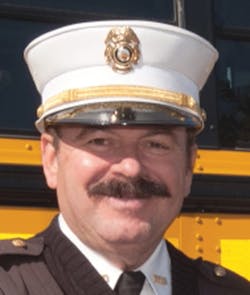I am often asked, “How important is it to have a designated public information officer (PIO)?” After doing it for over 30 years, I feel it is more important now than ever. Why? We live in a fast-paced world. And while we have amazing technology at our fingertips, different generations get their information by different methods. The modern PIO must be versatile to handle all these changes and needs.
Many responsibilities
It doesn’t matter if you work for a volunteer, combination or full-time career agency, every department needs a designated PIO. Let’s consider the many roles and responsibilities of the PIO:
1. Emergency response information: The PIO’s most important function is to provide emergency information to the public during an incident, emergency or disaster. The PIO is a member of the command staff of the incident command system. The PIO stands next to the incident commander (IC), obtaining information to be disseminated as needed. If the situation calls for releasing life-saving information for an evacuation or shelter in place, it must be done immediately. A trained PIO will already know who to contact in the media, how to make notifications using the emergency-alert system or social media.
2. Department promotion: Fire departments often need the support of the community. Keeping the community aware of your department’s activities makes it easier to get that support when you need it.
3. Recruitment: Whether volunteer or career, the fire service is always looking for new personnel. The PIO can provide the community with information on recruitment and hiring qualifications.
4. Media liaison: Whether working an incident or on a specific story, the media needs a contact person who is available and reliable.
5. Public interaction: Many people think PIOs only handle the media, but that is just one piece of the pie. There are many others who want information about the department or incidents, including the public, insurance companies, civic organizations, students and other government agencies, to name a few.
6. Department work: The members of your department should not learn what is going on in the department by watching TV or reading outside news sources; they should get their information directly from the department PIO. This can be done through email, social media or a newsletter.
7. Education: Whether it is fire and life-safety information, disaster preparedness or how to become a firefighter, the PIO can employ the media, give talks at schools and civic groups, or use social media to spread the word. Their message can reach thousands of people at a time.
8. Social media gurus: Social media is fast-paced and time-consuming—and here to stay. Before social media, PIOs disseminated information to others; it was a one-way street. With social media, the information-sharing and consumption has become a two-way street. PIOs are not only sending out information, they are also receiving information, many times direct from the public. PIOs can answer specific questions directed to them. There are various social media platforms, and the PIO needs to know which one to use for each situation.
9. Audience master: There are different audiences who need our information. Older people tend to use older media, such as radio and TV. The younger generation is more apt to use social media on their smartphones. The PIO must understand the needs and determine which methods are best to use in their community to ensure the message is reaching everyone.
10. New incidents: Incidents that involve many people—terrorism, mass shootings, natural disasters or mass-casualty incidents—have risen over the last decade, and the fire service is always involved. The PIO must be able to manage a variety of new and evolving incidents.
In sum
Today’s fire service PIO is the public relations, public affairs, public education and information expert. They need to know what is needed, what should be disseminated and what medium they are going to use to get the job done. The PIO is no longer just the person who gives interviews to the media.
About the Author

Timothy Szymanski
Timothy R. Szymanski is a Master Public Information Officer who is the fire public education & information officer for Las Vegas Fire & Rescue. He has been in the fire service for 51 years and has worked in every position from firefighter/paramedic to fire chief in his career. Szymanski also is a Master Fire Service Instructor. He was inducted into the Nevada Broadcasters Association Hall of Fame in 2017 and received the association’s Community Service Award. Szymanski also received the National Firemark Award from Liberty Mutual Insurance. He is a PIO instructor for the Nevada Department of Public Safety and was the Fire & Emergency PIO for the 1996 Summer Olympics in Atlanta.
